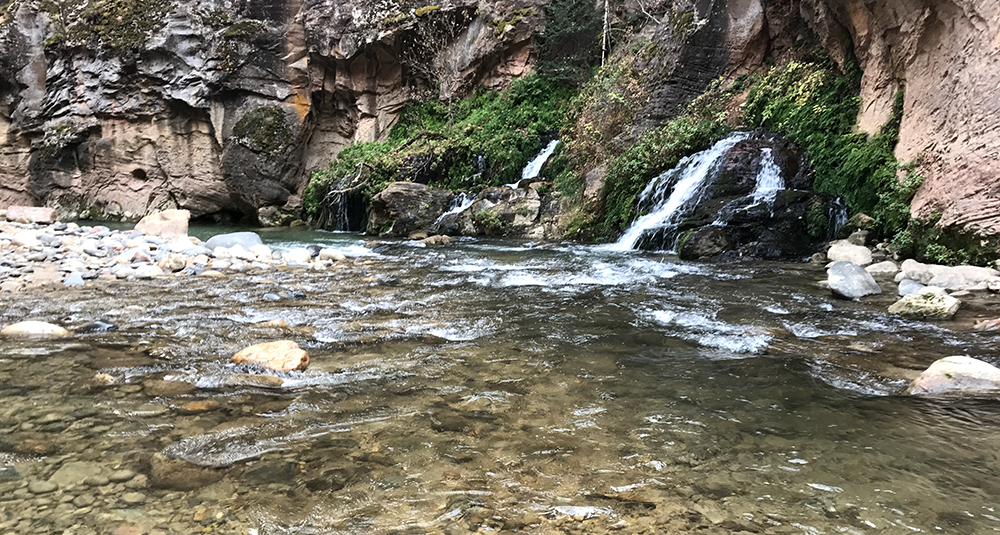Zion National Park is a world-class destination whose popularity is soaring in recent years. While many have heard of this park, and have it on their “bucket list”, only true Park Junkies know the real facts about Utah’s first national park.
Here are some fun facts you’ll wanna bust out at your next Zion cocktail party…

Guide to Zion
Zion Fun Facts
fact 1: Zion was first designated as Mukuntuweap National Monument. It would likely be Mukuntuweap National Park if not for the outcry of Utah’s Mormon residents.
In 1909, President Taft named the national monument, applying the Paiute name (which means “straight canyon”) without consulting local Mormons. The Utah folk straight blew a gasket. They considered the given name an insult to their church, and to their pioneer heritage (never mind the native heritage).
In 1918, the newly formed National Park Service’s first director, Stephen K. Mather, was institutionalized during one of his recurring bouts of severe depression. His assistant, Horace Albright was petitioned by Mormon state leaders who asked that the name be changed to Zion. Albright obliged, and the park was renamed to Zion National Monument. It became Zion National Park the following year, in 1919.
fact 2: Although not known for its arches, Zion is home to the second largest arch in the world. Interestingly, it is likely that someday in the not too distant geologic future, Zion will be home to the largest.
While it is true that Utah’s Arches National Park contains more than 2,000 of these beauties, the honor of holding the second largest belongs to Zion. Kolob Arch, in the La Verkin Creek section of the park spans 287 feet. This is just 29 feet less than Landscape Arch in Arches, which currently holds the world record length for a freestanding arch.
However, Landscape Arch has a diameter of only 11 feet at its center. Arches don’t last forever, and Park Junkie’s bet is that Landscape Arch falls before Kolob Arch. Giving Zion the claim to the largest arch prize. We’ll see…
fact 3: Zion is home to more than 1,000 different species of plants. Not bad for a desert eh?
Park elevations range from roughly 3,700 to 8,700 feet. This provides a multitude of climates that harbor a broad diversity of plant communities. The park’s adjacent landscapes of the Basin and Range, Mojave Desert and the Colorado Plateau, vary greatly in geological topography, These lands lend influence to Zion’s ecological makeup.
fact 4: Zion offers the ability to taste delicious 1,000 year old water.
Hundreds of thousands of visitors journey to the Weeping Rock, in Zion Canyon. However, most of these folks have no idea that the water that emerges from the sandstone walls at this spot has taken more than 1,000 years to filter down through the stone to drip down at Weeping Rock.
This occurs because at this point, the rock hardens to the point that it no longer allows the permeation of water, and the water is forced out the side of the rock.
Zion Stat Sheet
established: November 19, 1919 as Zion National Park
monument: July 31, 1909 as Mukuntuweap National Monument
rank of admission: 14
annual visitation: 2018 – 4,320,033
rank in visitation: 4
size: 146,598 acres
rank in size: 36
low point: Coal Pits Wash – 3,666 ft.
high point: Horse Ranch Mtn – 8,726 ft.
time zone: Mountain Time Zone
park phone: 435 772 3256
Guide to Zion
Relevant Links
National Park Guides

All content found on Park Junkie is meant solely for entertainment purposes and is the copyrighted property of Park Junkie Productions. Unauthorized reproduction is prohibited without the express written consent of Park Junkie Productions.
YOU CAN DIE. Activities pursued within National Park boundaries hold inherent dangers. You are solely responsible for your safety in the outdoors. Park Junkie accepts no responsibility for actions that result in inconveniences, injury or death.
This site is not affiliated with the National Park Service, or any particular park.
